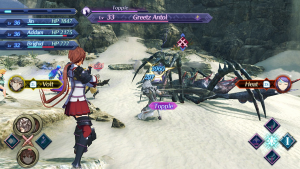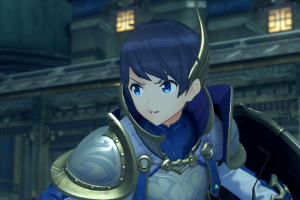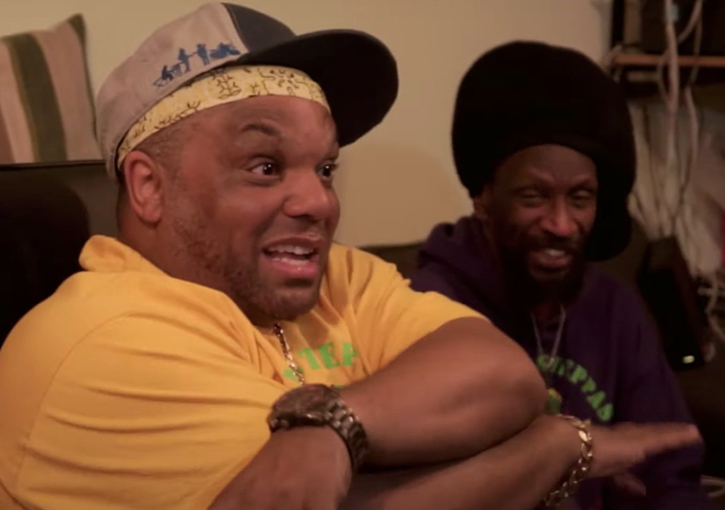
Games
Nintendo’s new Xenoblade expansion eases players into the daunting world of RPGs
Role-playing games can be intimidating. Figuring out how combat or character customization works can be confusing, and they can demand upward of 100 hours of your time just to see the story through to the end. Tetsuya Takahashi knows more about the genre than most. After getting his start as an artist and designer working on classics like Chrono Trigger and Final Fantasy VII, he went on to form his own studio, Monolith Soft, which specializes in sprawling, complicated RPGs. Most recently, Takahashi and his team released Xenoblade Chronicles 2 on the Nintendo Switch, a sci-fi epic that went on to become a surprise hit, selling more than 1.4 million units after it launched last December.
The game was especially notable for its sense of scale; in the fiction of Xenoblade Chronicles 2, humanity lives on the backs of massive creatures called titans, beings so huge that they’re home to entire ecosystems, like living islands floating through the sky. Xenoblade Chronicles 2 was also exceedingly complex. The game featured a unique setup where human adventurers were paired with sentient, humanoid weapons known as blades, resulting in a combat system that required juggling lots of different characters and variables.
Fans of Monolith’s games loved the size and complexity, but Takahashi also found that many new players struggled with the series. “We heard some feedback that the systems in general, and the battle systems specifically, were a bit hard to pick up, or intimidating,” he says. “So we did want to give new players who might feel that way a game that had systems that were easier to pick up for the first time.”
The solution comes in the form of Torna – The Golden Country, a standalone expansion for Xenoblade Chronicles 2 that launches today on the Switch. It’s a smaller, self-contained experience, one that serves as an ideal entry point for the series. You don’t need to have played the original game to understand the story — though for fans, the expansion delves deeper into the backstories of some beloved characters — and the experience is about a quarter of the size of the original, clocking in at a much more manageable 20 hours.
There are also more tutorials in the early stages to explain some of the more confusing aspects of battle and character development, and other aspects, like the map, have been streamlined so they’re easier to understand. These changes don’t dramatically alter the experience, but they do smooth out some of the rough edges from the original release.
For Takahashi, it was a challenge to create a game that would satisfy both the ravenous Xenoblade fans and new players he was hoping to lure to the genre. “The thing I wrestled with was how to provide an experience for those fans that feels like a fully fledged game, without that full game price tag,” he says. Torna actually started life as part of the main game, but when Takahashi and his team started scoping out the project to pitch to Nintendo, they realized that it would be too big, so they cut the scenario. But when it came time to look for new scenarios for post-launch downloadable content, they had a ready-made concept.


Despite being about a quarter of the size of the base game, Torna still feels remarkably large. The story is a lengthy quest that takes place in the midst of a war that helped shape the events of the original Xenoblade Chronicles 2, and it has all of the melodramatic twists and turns that the series is known for. The sense of scale, meanwhile, never ceases to amaze; there are moments where you’ll see a huge mountain off in the distance, only for it to move, and you realize it’s actually the head of the massive titan you’re standing on.
These integral parts of the experience still work even in a much shorter game. For Takahashi, who is used to working on games that last at least 80 hours, his biggest challenge wasn’t cramming a story into that timeframe, it was making the actual game work and flow in a way that felt right. “The biggest thing that we struggled with in trying to deliver an experience on par with a typical RPG in a 20 hour DLC came down to balance,” he explains. “Everything from where you’re going to place the monsters, the number of battles in a playthrough, the structure of the different maps. Balance was the thing we struggled with most.”
While Takahashi is excited about the possibility of reaching new players with Torna, the expansion doesn’t necessarily represent a shift in direction for Monolith. After all, Takahashi likes big games — and he’s not the only one. “I’ve come to understand that fans of the Xenoblade series really like these long experiences,” he says, “and they enjoy these games that allow them to be in these worlds for a long time.”




